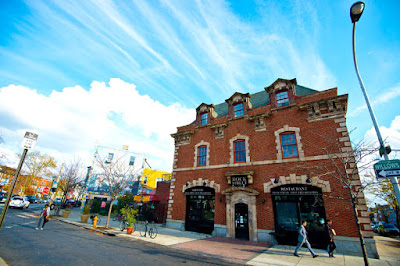Translate
3/22/24
Bethlehem Pennsylvania and its Historic Districts
3/07/21
Locally Managed Travel Services
2/23/21
Arezza - Volt Logistics
Innovative Energy Savings Solutions for Small Towns and Businesses
Volt Logistics specializes in properties typically found on main street and historic districts, with a focus on energy savings and building automation systems.
Property Types range from hotel, vacation and other short-term accommodations, retail, and office buildings as well as museums and entertainment venues located in historic districts and main streets of towns and suburban areas.
Innovative Solutions for Business and Commercial Districts in Historic Towns and Neighborhoods
Small and Medium-sized Commercial Buildings account for 95 percent of building stock and consume half the energy in a sector of the economy responsible for 20 percent of the total energy consumption. Owners of smaller buildings are often unaware of the amount of energy wasted and the opportunity for savings that building automation systems provide.
Building Leases define how energy costs are divided between tenants and owners. Often, these leases are not structured in a way that promotes energy savings. Tenants have no incentive to save energy in their leased premises because energy costs are based on tenant square footage. Building owners have no incentive to invest in energy efficiency because the operating expenses are passed onto tenants.
Green Leases promote energy efficiency by creating lease structures which equitably align the costs and benefits of efficiency investments between building owners and tenants.
Energy Management Systems are utilized to centrally control devices like HVAC units and lighting systems across multiple locations. EMS also provide metering, sub-metering and monitoring functions that allow facility managers to gather data and insight to make more informed decisions about energy activities across their sites.
Distributed Generation occurs on a property site when energy is sold to the building occupants; here, commercial PPAs enable businesses and governments to purchase electricity directly from the generator rather than from the utility. Power Purchase Agreements PPA are a legal contract between an electricity generator and a power purchaser.
Revenue Sharing of the Energy Savings among Properties, Tenants, Equipment and Components Suppliers and Contractors
1/21/20
Discover Oklahoma City
Adventure family-friendly adventures when visiting Oklahoma City.
Asian an influx of Vietnamese immigrants in the 1970s transformed the area surrounding Northwest 23rd Street and Classen Boulevard into a vibrant enclave of Asian culture.
Automobile Alley is just north of downtown in what used to be the primary location for the city's car dealerships; now it is home to some of OKC's best local dining, specialty shops and more.
Bricktown once a busy warehouse area, now it’s the city’s hottest entertainment and dining district.
The Classen Curve district in northwest Oklahoma City is the place to dine, shop and play.
The Deep Deuce district of Oklahoma City is small but carries tremendous historical significance as a center for jazz music and African-American culture.
Film Row the city's preserved film distribution district has been reborn as a creative hub on the western edge of downtown.
Midtown's mix of local restaurants, neighborhood pubs, unique shops and historic homes make it a great place to experience the best of OKC's recent urban renaissance.
The Paseo Arts district is known for its eclectic art galleries (many attached to working artists' studios) and shops, as well as its cuisine and nightlife.
Stockyard City is home to shops specializing in all things western; here, you can outfit an entire ranch or just find a new pair of boots and enjoy a great steak in Stockyard City.
























